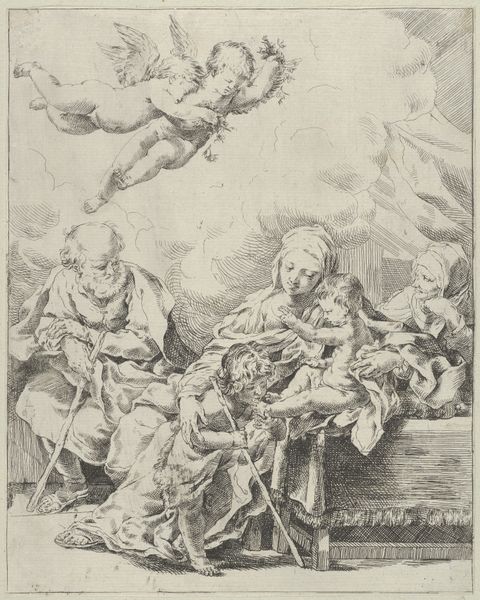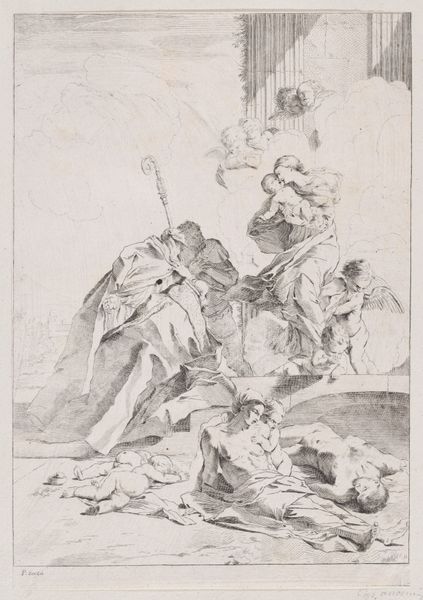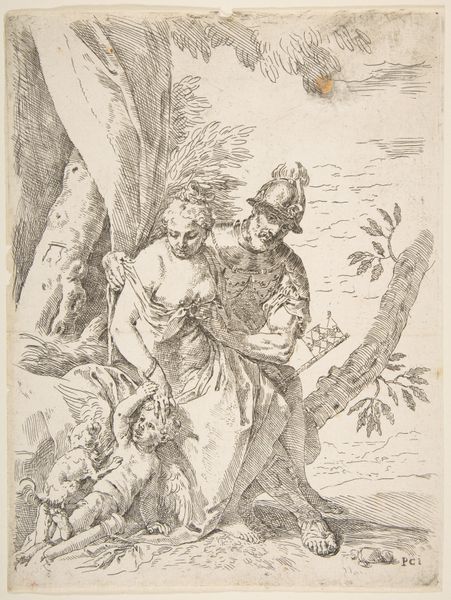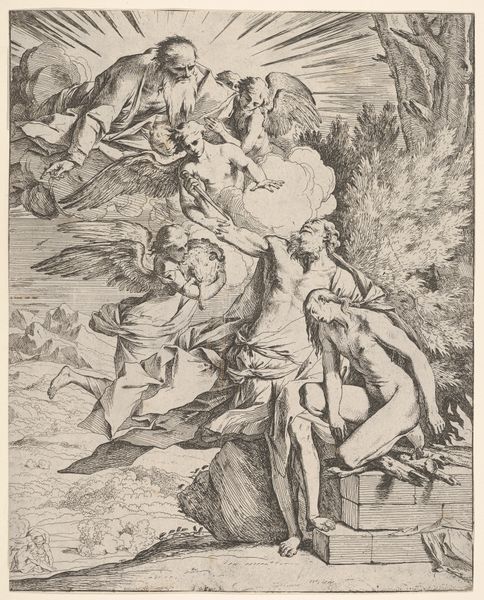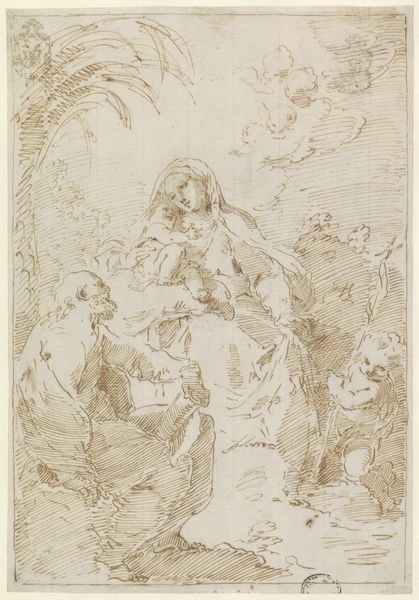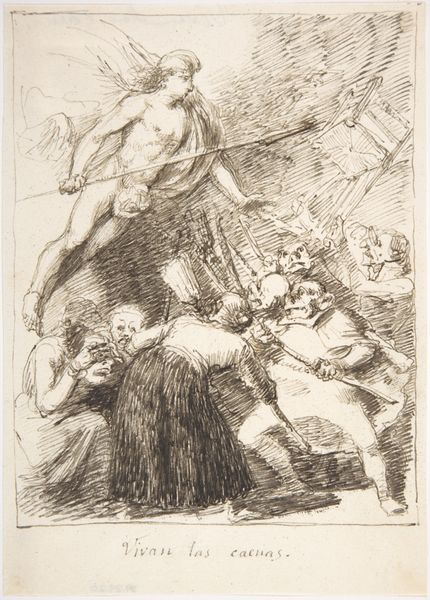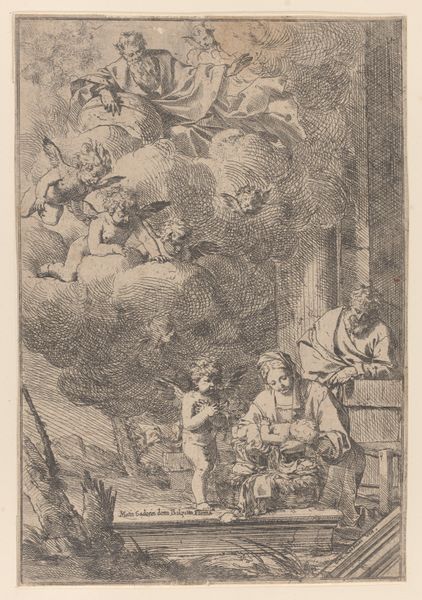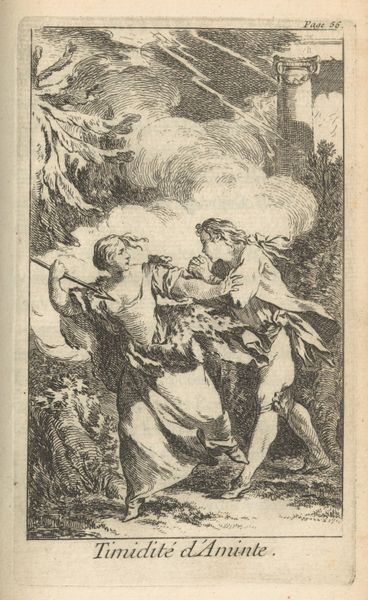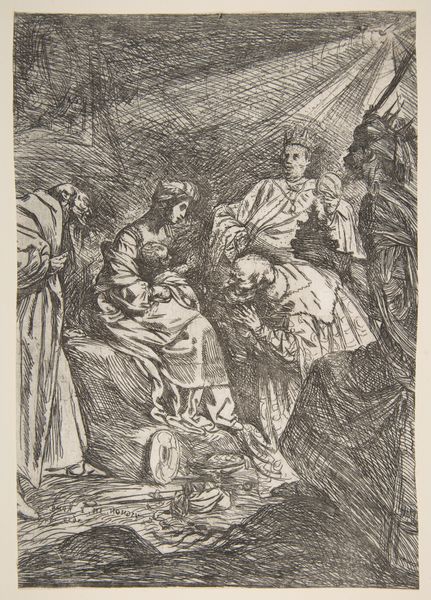
Dimensions: Sheet: 5 3/8 × 3 5/8 in. (13.7 × 9.2 cm) Image: 5 1/2 × 3 5/8 in. (14 × 9.2 cm)
Copyright: Public Domain
Jean-Honoré Fragonard created "The Disciples at the Tomb" using etching, a printmaking technique that democratized art production in the 18th century. It’s basically using acid to carve an image into a metal plate, inking it, and then pressing it onto paper. This process allowed Fragonard to create multiple copies of his work, reaching a broader audience beyond the wealthy elite who could afford paintings. Look closely at the delicate lines and intricate details he achieved through this method. The etching captures a sense of drama and movement, conveying the disciples' emotions as they encounter the empty tomb. Fragonard’s choice of etching as a medium reflects the changing landscape of art production during this period. It's a process that required skill and precision, but also allowed for a level of experimentation and spontaneity. By embracing printmaking, Fragonard blurred the lines between fine art and more accessible forms of visual culture, engaging with the social and economic forces that shaped artistic production in the 18th century.
Comments
No comments
Be the first to comment and join the conversation on the ultimate creative platform.
